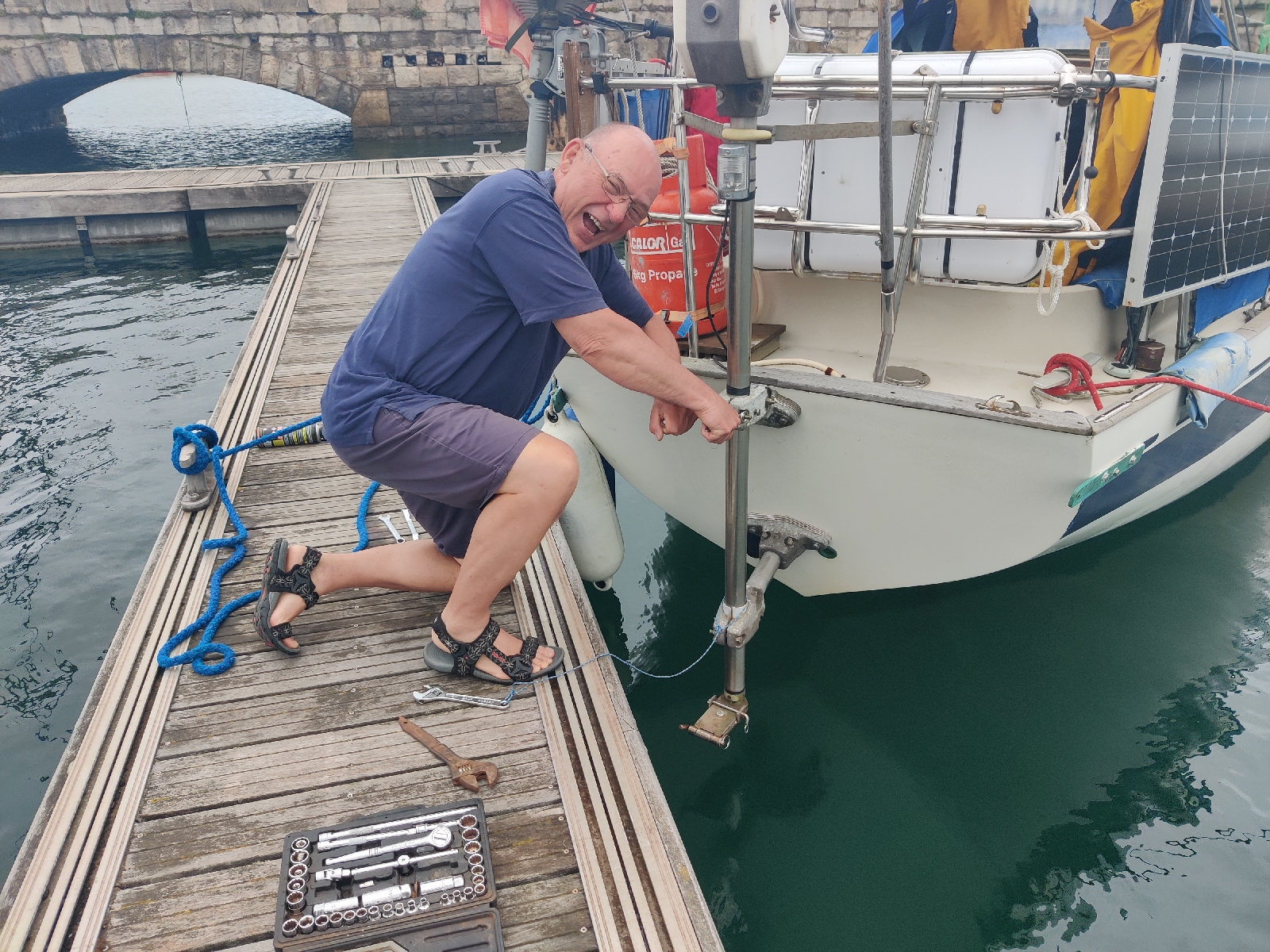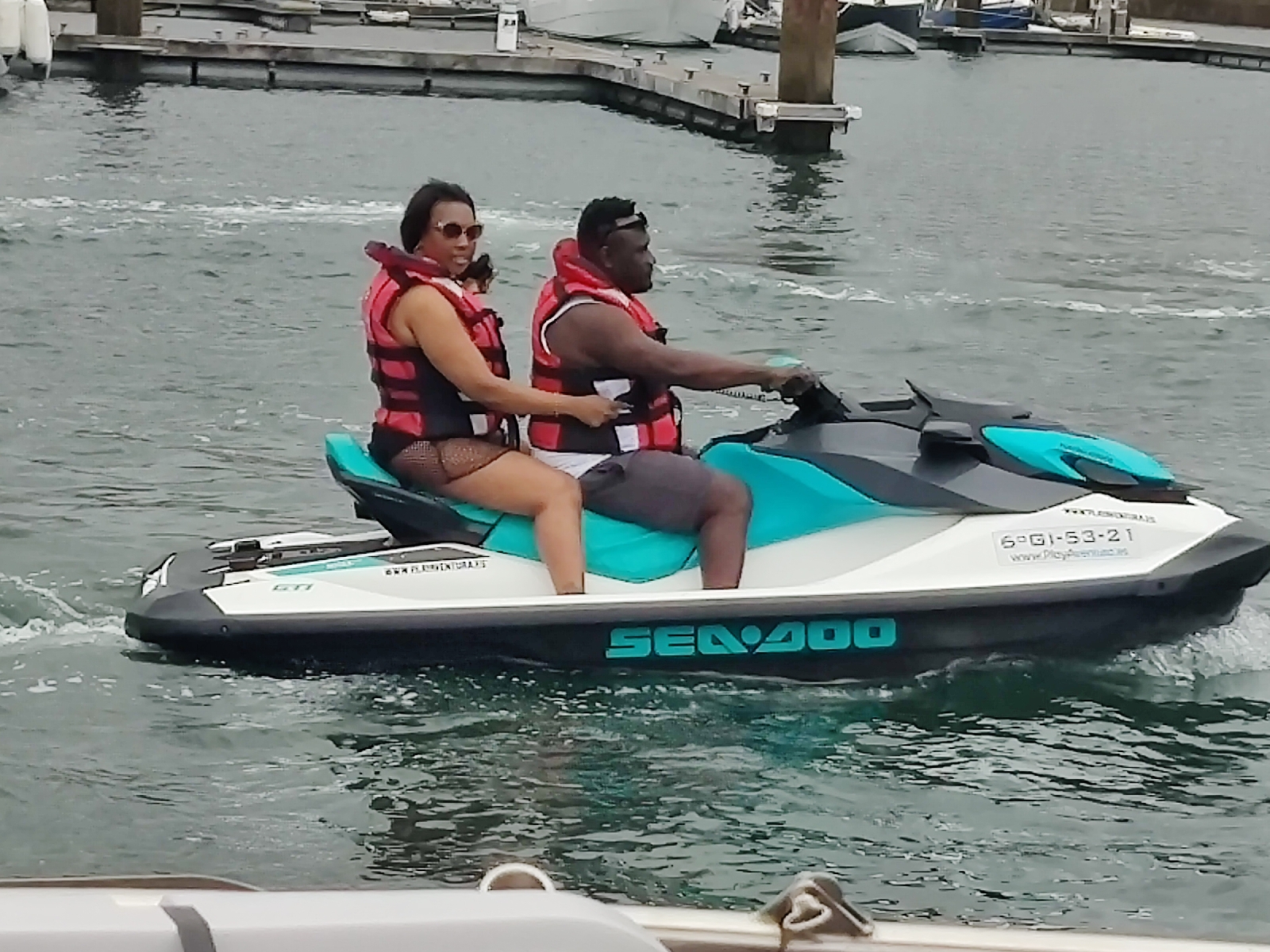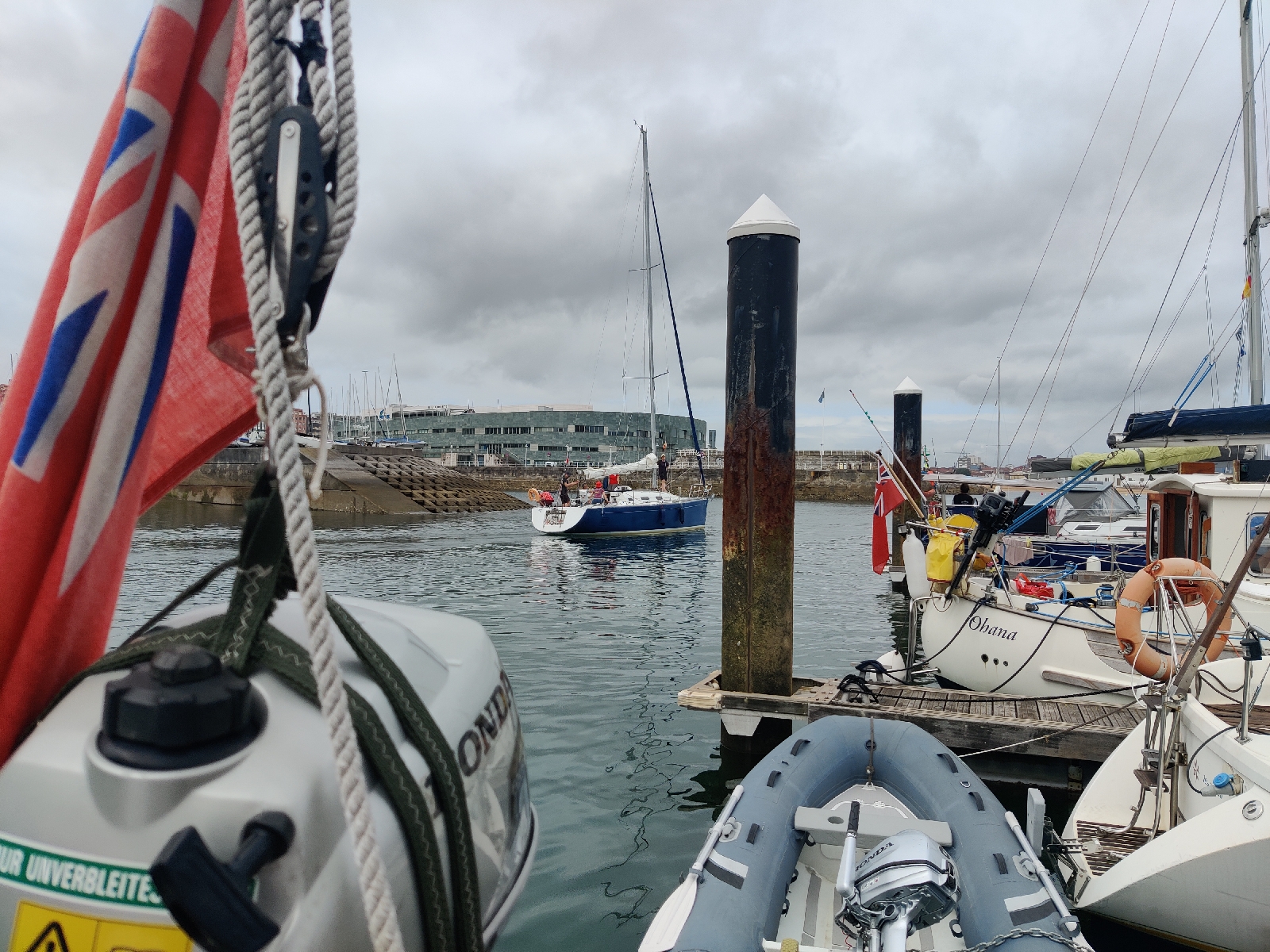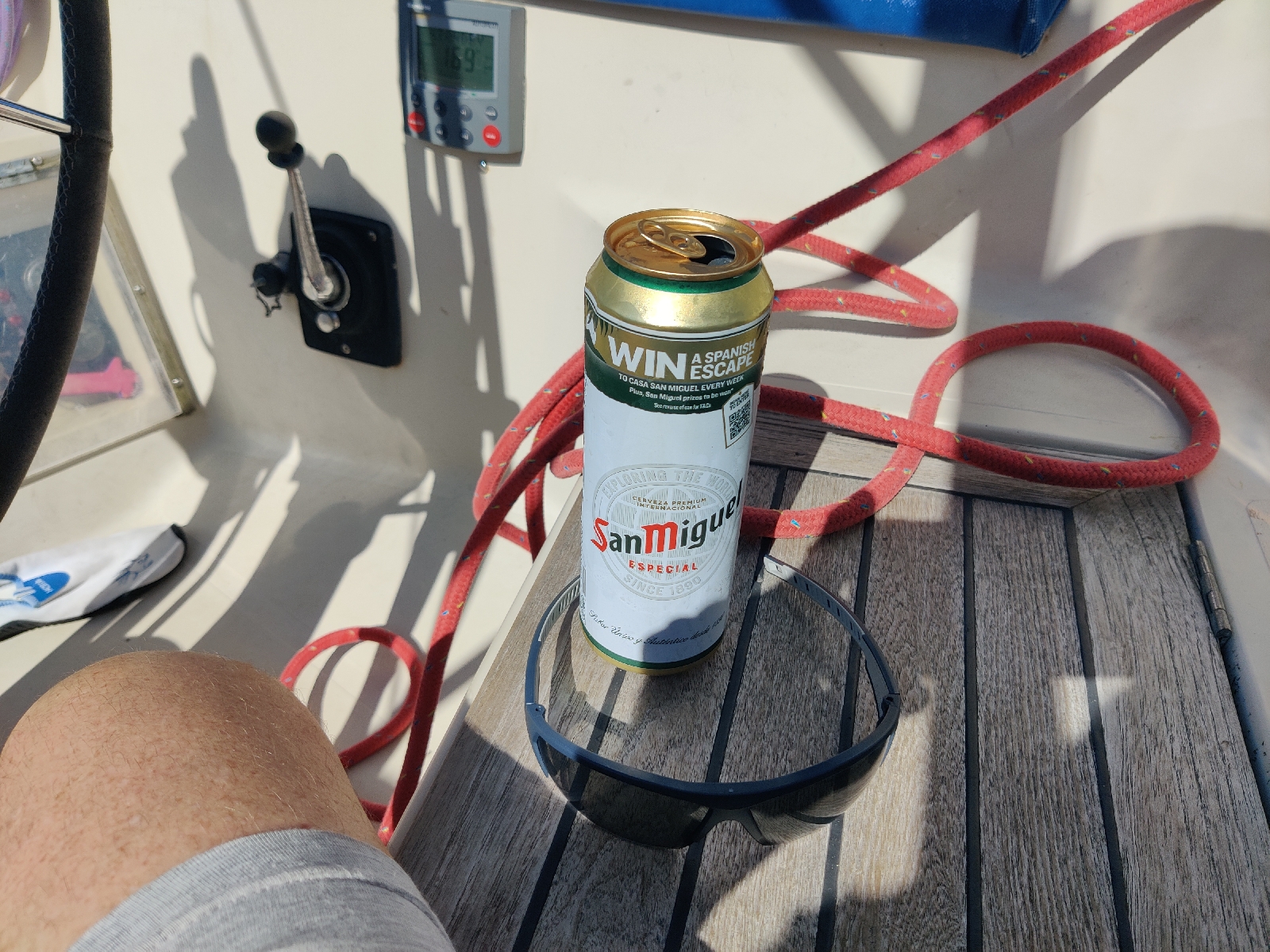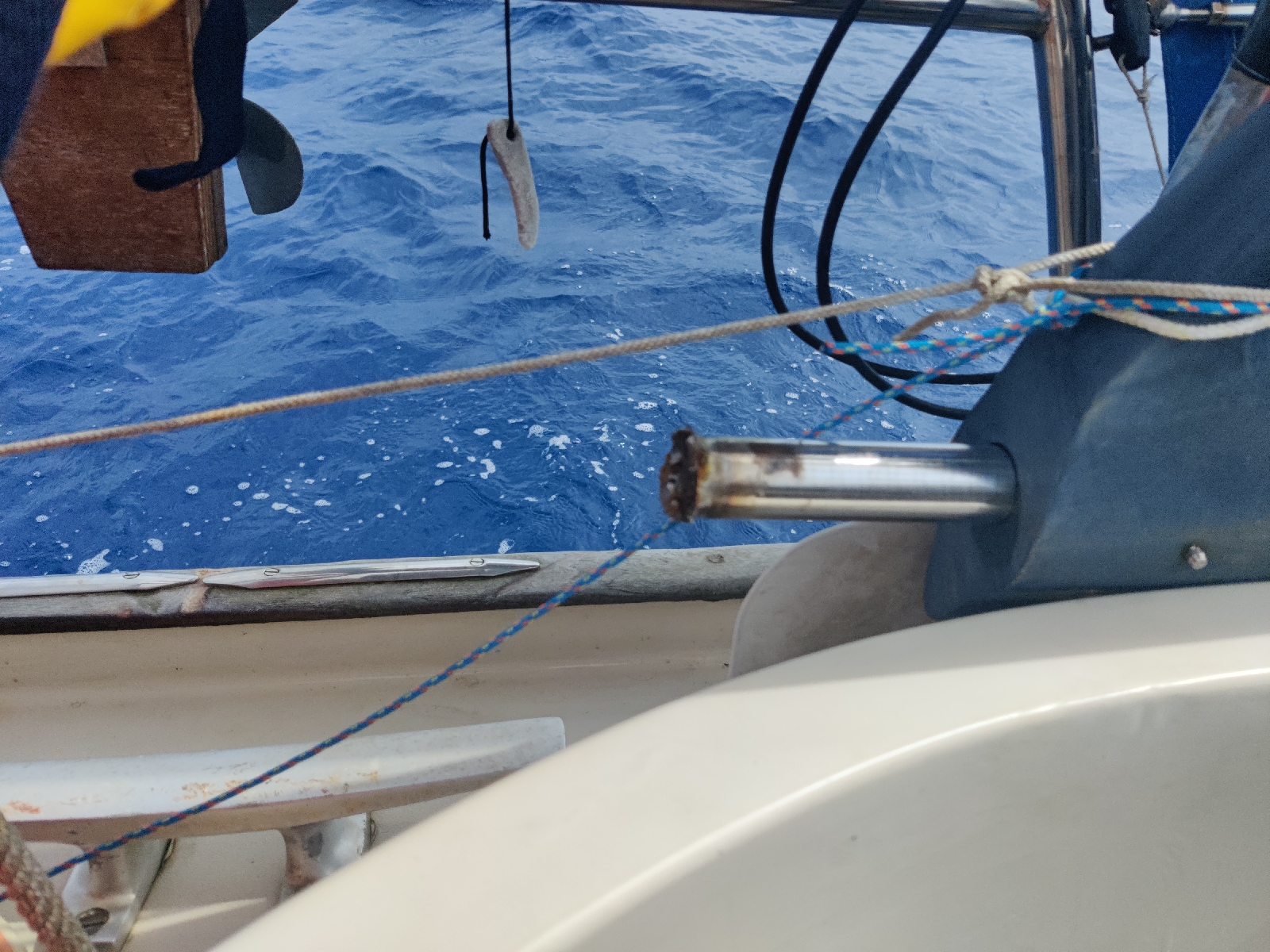Sailing a 1975 Biscay 36 OR an Ancient Creek conundrum: "The Ship of Theseus" Theseus and his crew embark on an epic voyage of discovery and over the course of some years every part of the ship is replaced but at different times. Is the ship that returns, the same as the one that left? (with thanks to John Nicholls).
Sunday, 30 July 2023
Rest, Work and Play in Gijon
Friday, 28 July 2023
To Gijon
The Great Escape!
The strong North Westerlies that blew all day on Monday 24th July should have been blowing us across the channel but instead because I had parked Bonny on the outside south eastern corner of Falmouth Haven Marina, they were our gaoler - they blew athwart the boat and pinned her to the pontoon in their vice-like grip. Furthermore, Good Report was moored alongside us and so even if I had been foolish enough to try and escape, she would have to move first to let us out. We were 'guarded' by a pair of boats moored in front of us on the same pontoon and behind us about half a boat length and at right angles to us, lay the sterns of two other boats moored alongside eachother on the other face of the corner of the pontoons.
To escape forwards would require turning the bow of the boat into the wind within about 15 metres, but the windage on the mast, which sits considerably nearer to the bow than the stern, is huge and excerpts a tremendous load pushing the boat sideways. Not only that but the boat's long deep keel provides a large resistance in the opposite direction. Oh and I nearly forgot, when forward gear is engaged the considerable 'prop walk' initially turns the boat to port - in this case, onto the pontoon.
The reverse is of course true - engaging reverse pulls the stern of the boat to starboard. Whilst that would pull the stern of the boat away from the boats behind us, the bow, encouraged by the strength of the wind would be blown onto them. Contact of our bow pullpit with their over hanging stern gear, of dinghy davits on the first and Hydrovane steering gear on the second, would leave a tangle of twisted metal and some very cross sailors and so was not an option to be considered lightly!
As it happened, these considerations were academic for the first half of the day because the Yellow Brick tracker had still not turned up and so Mick and I were out shopping for fresh provisions for what we hoped would be a passage across Biscay. I had emailed YB Tracking first thing to advise them and they had replied that it was out for delivery! Whilst on our way to the shops, a UPS van passed us and resisting the temptation to acost the driver, I checked the delivery status. My heart sank when the tracking page continued to read "delivery date to be advised".
I fired another email off to YB tracking and we continued with our shopping. On our way back I checked again and to my great relief the status had changed to "delivered". So Mick went to buy pasties for lunch and I went to collect the tracker.
Back on board the wind was still howling and Bonny was still pinned to the pontoon. Nevertheless after our pasties, we made preperations to leave including filling our water tank and recommisioning the Yellowbrick - which proved time consuming and required repeated phone calls, but eventually it was done.
By 2000 hrs the wind had started to moderate and so the three of us (including George) studied the latest weather outlook and considered our options. We all agreed that Brest was achievable and if we were lucky we might get further south, possibly even A' Coruna.
Then we got ready to leave and discussed tactics for extricating ourselves from the Pontoons. After much debate, George decided to go out backwards and then remoor once we had left. The wind was still fresh but because he was further away from the boats behind us he had more room to play with. Out he went without too much trouble.
Next it was our turn. Mick and I both agreed that the best option was to 'spring off' to get the bows pointing out. This involves leading a rope fthe stern of the boat forward onto the pontoon and then reversing against it. The idea is that the stern is pulled in and the bows out, so achieving a turn before moving forwards. Then as quickly as possible, one must cast off and engage forward gear to continue the turn before the bows are blown onto the pontoon once again.
Try as we might however, we could not get the bows to point out enough to clear the boats in front. That left two options; wait for the wind to subside further or go out backwards. Having seen Good Report escape in this way earlier, I decided we could just make it. Once again there were two options; full power to get the whole boat out as far and as fast as possible or moderate power that would reduce the turning momentum. The risk of the first was that our bow might get snared by the other boats' stern gear, the risk of the second that the whole boat is blown onto the sterns of the others.
I decided on the full power option. First we moved forwards as far as possible. A helpful frenchman was on hand to push the bows off once we started moving. This was it, the beginning or quite possibly, the end of our cruise.
OK lets go I shouted and engaged reverse and full power. The stern immediately pivoted out into the wind and the bows swung towards the pontoon. I had to get out quickly enough to get enough room for the swinging bows to clear the other boats. Fortunately they seemed unoccupied because I suspect any on board observers would have been in cardiac arrest territory. Bonny's stern was moving at a gathering pace away from the pontoon and her bow was swinging in a sything arc towards the sterns of the unsuspecting boats. I held my breath, Mick turned as white as a sheet as Bonny's bow swung clear with inches to spare. I just managed to arrest her sternway to avoid smashing into moored small craft and we were free. With a cheery wave to George on Good Report and to our helpful French helper on the pontoon and a rueful grin to Mick, who replied, "that was VERY risky" we made our escape towards the harbour exit and the Western Approaches. It was 2130 on Monday 24th July.
Monday, 24 July 2023
A welcome Jester & other friends and most unwelcome frustrations
Thursday, 20 July 2023
Up the mast again and other tales...
Sunday, 9 July 2023
Up the Tamar
 |
| Boat with a view - over Cargreen, on the Tamar |
 |
| Basty |
 |
| Mick |
 |
| Sunset near Portland Bill |
 |
| A view from the Bow - Bonny underway |
 |
| Two salty see dogs |
 |
| Basty admiring the cruising chute |
Good progress was made across Lyme Bay over night until about 10 miles to the North East of Salcombe, the wind suddenly veered and died. With the tide against us we faced what would be a rather tedious and lengthy beat around Start Point. The engine was therefore pressed into service once again and we motored around the Salcombe 'bulge'. Once round we briefly had a fair wind but within an hour or so of making sail, the wind failed once again and once again the engine was pressed into service.
We motored the remaining 15 or so miles into Plymouth and moored up in Mayflower Marina at around 0800 yesterday, Saturday 8th July.
Mick cooked up a huge breakfast after which we all made use of the excellent bathroom facilities. Basty then left for home and Mick caught up on some much needed sleep. I snoozed for a while and then pottered around doing goodness knows what.
Mick and I then tackled a lengthy diagnostic exercise on the boat's AIS (Automated Information System). This is a system that transmits information about the boat (course, speed, type of vessel etc) over the VHF radio wavelength to other vessels and receives the same information from other vessels. All commercial vessels are required to transmit over the system but it is optional for leisure craft, many of which have relatively cheap receive-only equipment. Increasingly however, transmitting equipment has become more affordable and more and more boats have installed it. The system has made navigating much safer when vessels are in close proximity to one another.
Bonny has an AIS transmitter, but a few weeks before departing Hoo, I noticed that it was not working properly - a fault indicating that it was not transmitting was displayed on the set.
The transmission and reception of data is conducted via an antenna that on Bonny was at the top of the mast. So, a few weeks ago I climbed up the mast to investigate. I found a poor connection between the cable and the antenna and the antenna itself looked in poor health. Great I thought, there's the problem, so I disconnected the antenna and ordered a new one. A week later armed with a new one and the necessary bits and pieces to connect it I went back up the mast and installed it. Back in the cabin I turned on the AIS transceiver to check all was well and was extremely disappointed to see things were no better. I concluded the old cable must also be faulty and so I bought some more. I couldn't face what would be a nightmare job to get the new cable up the inside of the mast and so decided to relocate the antenna to the solar panel 'arch' on the stern of the boat. I therefore had to go back up the mast to retrieve the new antenna.
A week later armed with the new cable, I installed the antenna in it's new location. After connecting everything up I turned on the set once again, but again there was no improvement. The set continued to display the warning that it was not transmitting.
 |
| A good reading |
 |
| A bad reading |
The question of course was why? Was there a problem with the transceiver set itself, was the cable at fault or was the new antenna faulty? We had three pieces of cable that we could connect the antenna to and we could connect the AIS transceiver to the VHF Antenna that is normally used by the VHF radio. We got poor readings on every occasion that the new Antenna was used but a much better reading when we connected our existing VHF antenna to the transceiver.
Ergo - the new antenna is faulty.
I've therefore contacted the supplier and asked them to replace the antenna. Hopefully that will solve the problem.
Once we'd completed the diagnostics, Mick left to return home to tidy up his affairs and I took the boat up the Tamar to Cargreen for a few days in order avoid the hefty marina fees.
 |
| A visitor (Wagtail) at Cargreen |
 |
| The Cargreen Anchorage at dusk |
-
Bonny is now (9/5, 1200 local time) en route to Bermuda having departed Marigot Bay, St Martin, around 1300 on 8/5, in driving rain, grey sk...
-
We got the anchor up around midday on Monday 7th July and headed out of Shelter Cove about an hour behind our new friends Sam and Kelder on ...
-
L-R standing - Vince, Susan, Iain, Don, Garry; seated - me and Sheryl. Shortly after we dropped the hook in Baddeck, Iain and Su...

